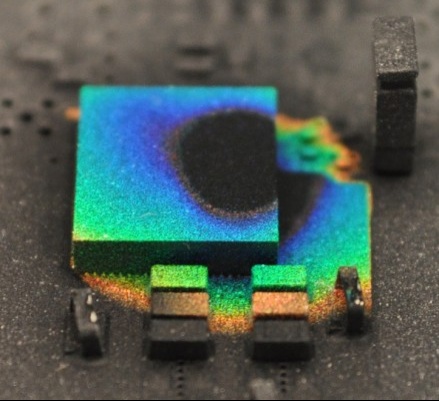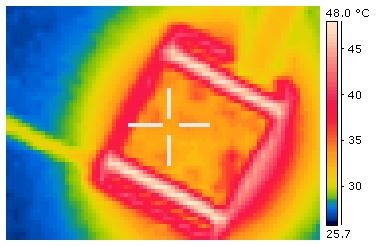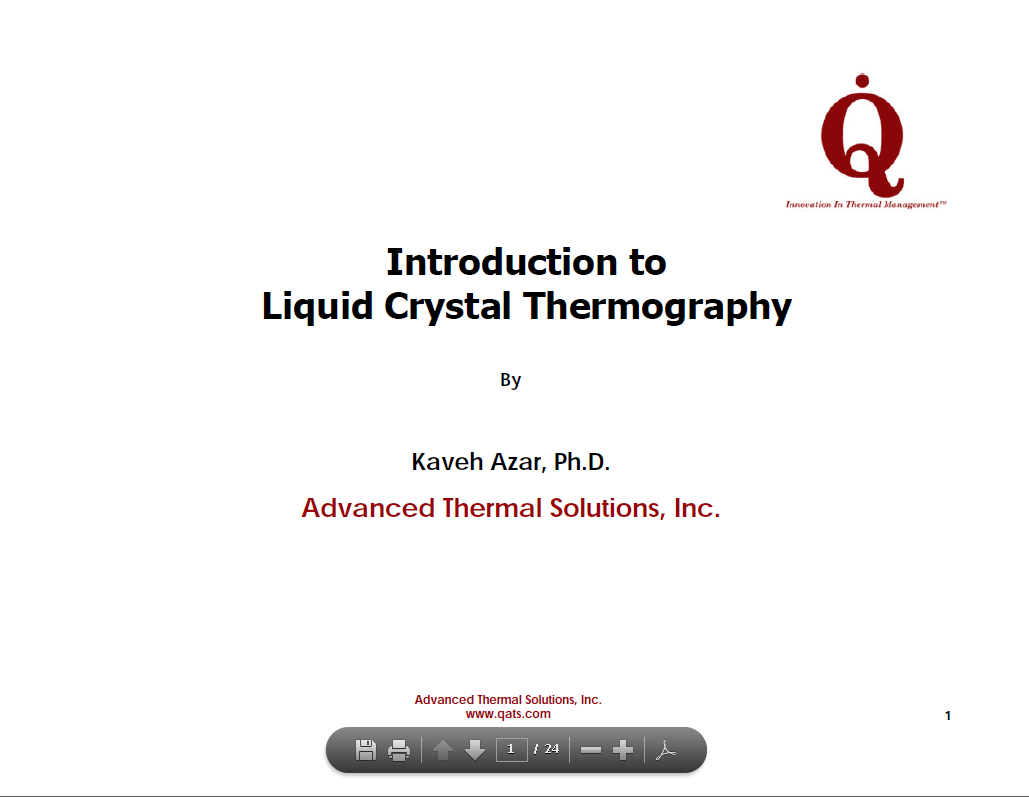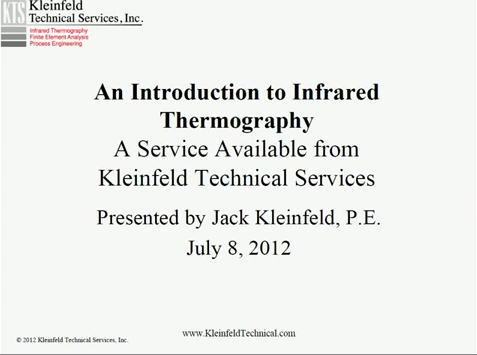|
recently here at coolingzone we reported on advanced thermal solutions' (ats) new tlc-100 liquid crystal thermography kit (ats is a media sponsor for coolingzone). the kit makes it easy to apply liquid crystals that are designed for heat transfer studies and mapping heat fields on electronic components or boards. but recently, there has been a debate about using the crystals or using an ir camera instead. that debate broke out on the linked in/thermal management group among two engineers. one engineer noted the merits of thermographic liquid crystals for thermal analysis while the other upheld that ir cameras were sufficient in and of themselves to collect the necessary data.
 
liquid crystal thermography infrared thermography
(photo from university of missouri)
one engineer, jack kleinfeld of kleinfeld technical services, a consulting firm that is "built on the unique combination of ir, fea and process engineering", noted that:
the issues with this approach, as opposed to infrared (ir) thermography is that it is a contact method. you get the surface "wet" with the measurement materials and affect the results by the mass of the materials.
the other engineer, kaveh azar of advanced thermal solutions, a firm that offers engineering consulting, training, thermal test instruments and thermal management solutions replied with:
the notion of lc being contact and ir non-contact is false, nevertheless. in most electronics cooling applications, because of the composite nature of the materials used in packaging or pwbs, one does not know the surface emissivity -- hence, you must treat the surface with a known material and calibrate before you do the measurement with ir...
ultimately, each application may require a different tool or different usage of the same tool. but the debate is interesting in that it highlights two important tools that every mechanical engineer and lab technician should know in their quest to answer customer questions.
you can see the entire debate at linked in/thermal management here: "spray-on thermochromic liquid crystals for thermal mapping of systems. this looks very interesting."
care to understand more? dr. azar presented on this topic at ieee in his talk, "introduction to liquid crystal thermography"....click the image below to see the presentation:

and mr. kleinfeld has published an "introduction to infrared thermography". click the image below to see the presentation:

|